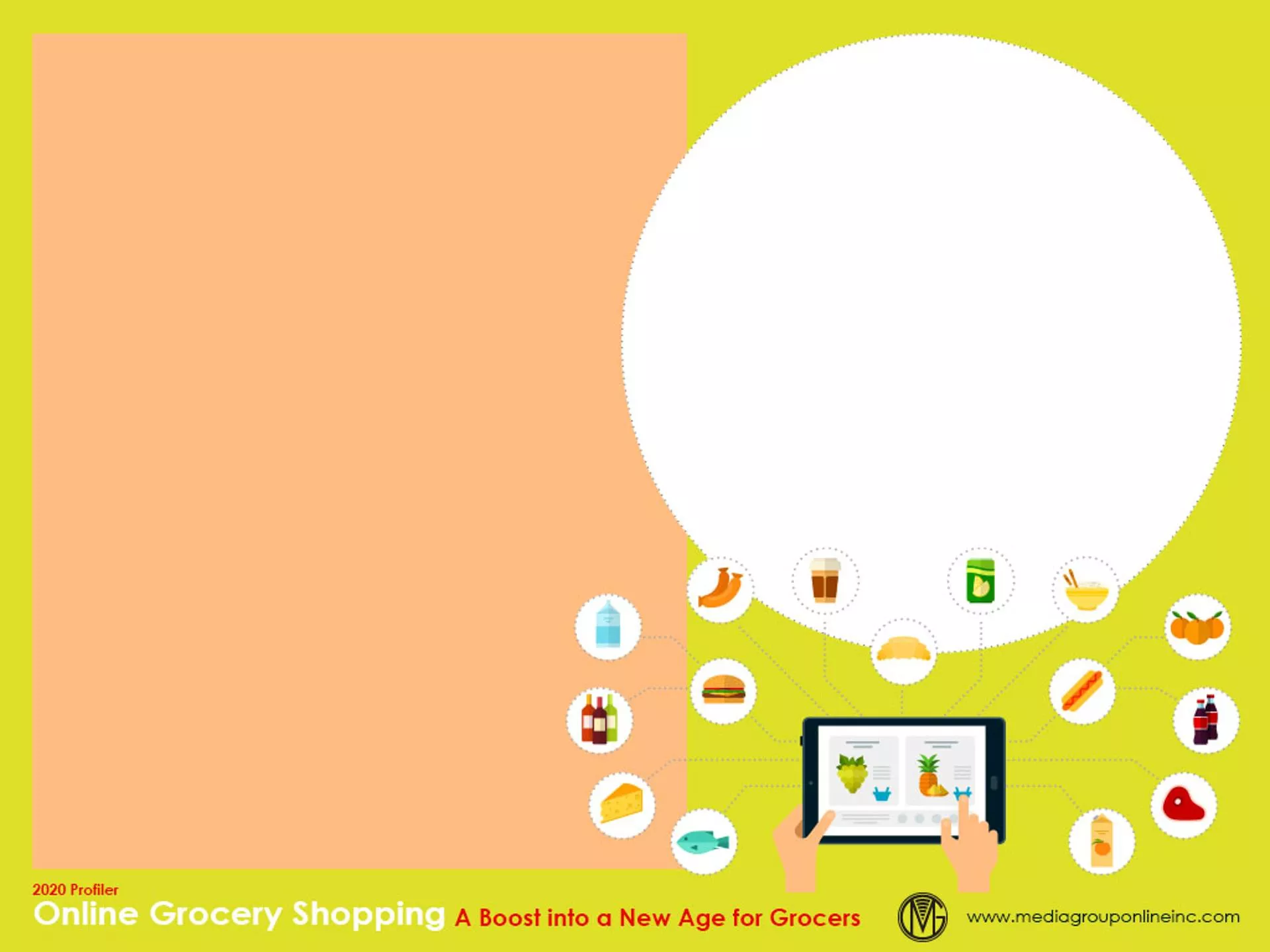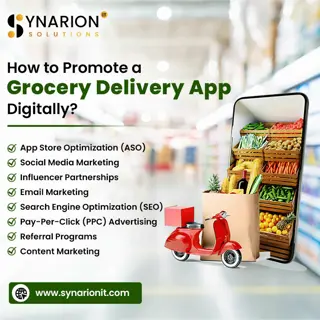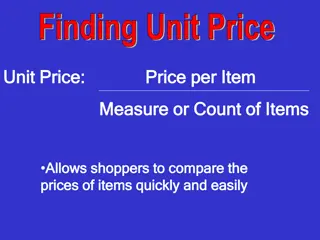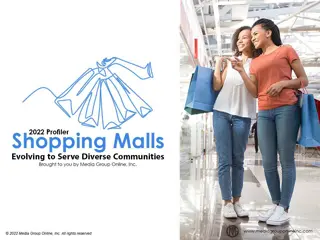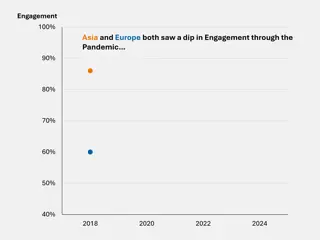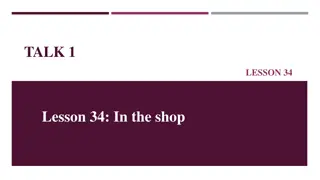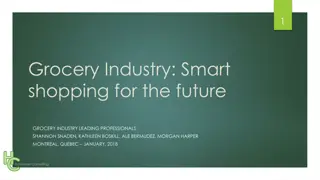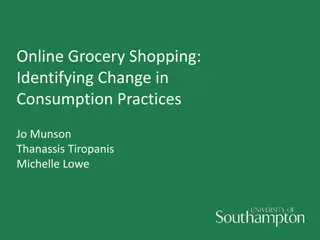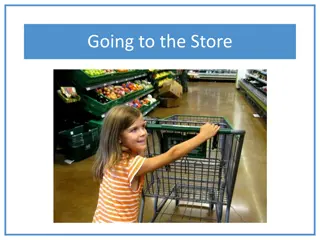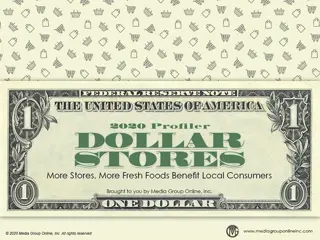The Rise of Online Grocery Shopping During the Pandemic
Billions of dollars flowed into digital grocery aisles during the pandemic as consumer behavior shifted towards online shopping. Surveys conducted by various research firms highlighted the significant increase in online grocery sales and the adoption of online shopping by a larger percentage of consumers. The convenience of grocery deliveries and the satisfaction of seniors with pickup services further fueled the growth of online grocery shopping.
Download Presentation

Please find below an Image/Link to download the presentation.
The content on the website is provided AS IS for your information and personal use only. It may not be sold, licensed, or shared on other websites without obtaining consent from the author.If you encounter any issues during the download, it is possible that the publisher has removed the file from their server.
You are allowed to download the files provided on this website for personal or commercial use, subject to the condition that they are used lawfully. All files are the property of their respective owners.
The content on the website is provided AS IS for your information and personal use only. It may not be sold, licensed, or shared on other websites without obtaining consent from the author.
E N D
Presentation Transcript
Billions Flow into the Digital Grocery Aisles Many consumers avoided shopping at grocery stores during the initial pandemic period, but by May 2020, according to an Inmar survey, 78.7% of respondents said they had shopped online for groceries, compared to 39% pre-pandemic. According to the April 2020 Brick Meets Click/Symphony RetailAI Online Grocery Survey, online grocery sales increased 37% to $5.3 billion from March s $4.0 billion. Then, the May 2020 survey reported online grocery sales increased another 24% to $6.6 billion. Field Agent s March 2020 survey of 1,509 adults found 25% said they were shopping more frequently online for groceries. A May follow-up survey with 1,010 of those same adults revealed the percentage had increased significantly, to 36%.
Online Shopping Patterns According to Coresight Research s 2020 US Online Grocery Survey (March 2020), consumers reported their online grocery purchases were from an average of 5 grocery categories, compared to 4.4 categories from the equivalent 2019 survey. Unsurprisingly, the Coresight Research survey results revealed 62.6% of online grocery shoppers had bought from Amazon during the past 12 months, which was essentially unchanged for the previous 12 months in the 2019 survey. Walmart was second at 52.3%, but had increased 14.9 percentage points from the 2019 to the 2020 survey. Target was third at 22.9%, with an increase of 7.2 percentage points and Costco was fourth at 15.2%, an increase of 6.3 percentage points.
A Flood of New Customers Even prior to the pandemic period, online grocery buying had been increasing significantly. According to Coresight Research data, 23.1% of respondents to its 2018 survey said they had purchased groceries online during the past 12 months. For 2019, 36.8% of surveyed consumers were online grocery buyers during the previous 12 months, and then the 2020 survey (conducted during mid-March) indicated an increase of 15 percentage points to 52.0%. More meaningful is the YOY increase of surveyed consumers who planned to buy groceries online only during the next 12 months: 2018 25.8%, 2019 39.5% and 2020 62.5%. Coresight Research forecasts 2020 online grocery sales could increase 40%, or $38 billion.
Grocery Deliveries: Another Convenience Driver Although DISQO s (a data and analytics company) mid-May 2020 online survey revealed 73% of respondents had shopped in-store only for groceries, 6% said they had used delivery only and 4% in-store and delivery. The survey also found 16% of respondents had more grocery deliveries during the mid-March to mid-May 2020 period, compared to 4% who said they were using deliveries less. Grocery delivery services were clearly recognized as a convenience for older adults, as 85% of those 75 and older said they were satisfied with their grocery delivery experience during early May 2020 while 84% of those 65 74 were equally satisfied.
Seniors Like Grocery Pickup Services Field Agent surveyed 1,509 adults during March 2020, and then conducted a May follow-up survey with 1,010 of them, asking what changes they had made permanently to their grocery shopping. Those using store pickup and more often increased from 7% to 14%. Of the consumers participating in DISQO s mid- May 2020 online survey, 7% said they had used pickup only to obtain their groceries during the past two weeks, and another 7% had shopped in- store and used pickup. As with grocery delivery, older adults were most satisfied with grocery pickup 65 74 87% and 75+ 90% and planned to order groceries for pickup during the last two weeks of May: 65 74 82% and 75+ 89%.
A Boost to Grocery- Related Technologies The pandemic has accelerated the use of contactless-payment technology. According to Mastercard Consumer Polling, more than half (51%) of Americans used the technology during February March 2020. Contactless payments were used for 85% of grocery purchases, more than twice pharmacies at 39%, retail stores 38%, quick-service restaurants 36% and transit 9%. The pandemic and surge in grocery deliveries has been a boon for Instacart, as its market share increased to 57% during April 2020 and stealing much of the increase from Walmart which had the largest share during 2019, but lost 25% of its share during March 2020.
Advertising Strategies Online grocery shopping may not match the levels of the early-pandemic period, but more people will continue to shop online. Supermarkets are compelled, therefore, to promote their online shopping platform in their advertising in other media. Local supermarkets are unable (and shouldn t try) to compete with Amazon, Walmart, etc. in the online shopping channel, but they can promote unique and/or gourmet items in their standard advertising to drive people to their online platforms or in-store. To promote themselves as forward-leaning businesses, local supermarkets should consider featuring/promoting in their advertising their use of contactless payment devices at checkout, robotics (for cleaning) and RFID technologies.
New Media Strategies Online grocery shopping is a safe choice for seniors, but many aren t very tech-savvy. Supermarkets can help with a series of short videos for social media posts explaining in very detailed steps exactly how to use their online shopping platforms. Younger adults with larger incomes are more likely to be general online shoppers and local supermarkets can attract their business by using social media posts to promote unique and/or gourmet food items they can order online and which are unavailable at major chains. Ask customers who used/are using the supermarket s BOPIS service (which is essential) and/or delivery service to post short videos about the convenience, ease of use and safety of the service.


